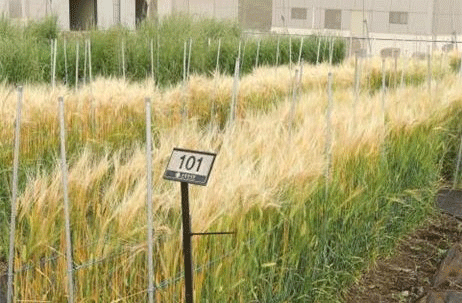In a significant move for Korea’s agricultural sector, the National Seed Institute of Korea has updated the crop-specific characteristics evaluation standards for barley and wheat. The revisions, which integrate international guidelines from the International Union for the Protection of New Varieties of Plants (UPOV), aim to enhance the reliability and relevance of seed assessments for breeders, scientists, and farmers. These updated standards, available on the National Seed Institute’s website starting from the 27th of this month, will streamline the breeding process and make it more adaptable to local environmental conditions.
Key Changes for Barley
For barley, the UPOV’s framework, which includes 29 assessment criteria, has been incorporated with feedback from breeders to refine the evaluation process. Previously, there were 39 characteristics being evaluated in Korea. Now, 20 of these characteristics—such as the heading time and the shape of the spike—have been adjusted or removed in favor of more relevant indicators. A crucial aspect of the barley standards that will remain is the ‘winter hardiness’ or ‘one-year resistance’—an essential trait for barley grown in cold climates. This characteristic ensures that barley can withstand severe winter conditions without dying, a feature critical to maintaining yields in Korea’s harsh winters. The final evaluation criteria for barley have now been set at 36 characteristics.
Wheat Evaluation: Streamlining the Process
Similar changes have been made for wheat. The updated wheat standards now include 31 characteristics, down from the previous 30, after 11 characteristics—such as awn length and grain color—were refined or removed to align better with the UPOV’s international guidelines. The goal is to ensure that the characteristics most relevant to wheat’s adaptability and productivity are prioritized, and that breeders have a more focused approach to enhancing crop performance.
Why These Changes Matter for Breeders and Farmers
The updated guidelines reflect a significant step toward improving the efficiency of crop breeding programs. By aligning with international standards, these new evaluation criteria will help farmers and breeders identify the best-performing barley and wheat varieties more easily. The emphasis on traits like winter hardiness and other region-specific characteristics will ensure that the varieties developed are more resilient to local environmental stresses.
The revision is also part of a broader effort by the National Seed Institute to enhance quality control and trust in the country’s seed certification system. As emphasized by Kim Guk-hye, the Director of the Seed Protection Department, the institute plans to continue refining these standards, incorporating feedback from breeders to further enhance the credibility and applicability of the seed protection system in Korea.
A Step Forward for Agricultural Innovation
The revised barley and wheat evaluation standards reflect Korea’s commitment to modernizing its agricultural practices in line with international norms. For breeders, the updates will provide clearer and more relevant benchmarks for developing high-quality crops suited to the country’s unique climatic conditions. For farmers, these changes can lead to better yields and more reliable crop varieties, which are essential in today’s rapidly changing agricultural landscape.
Error




